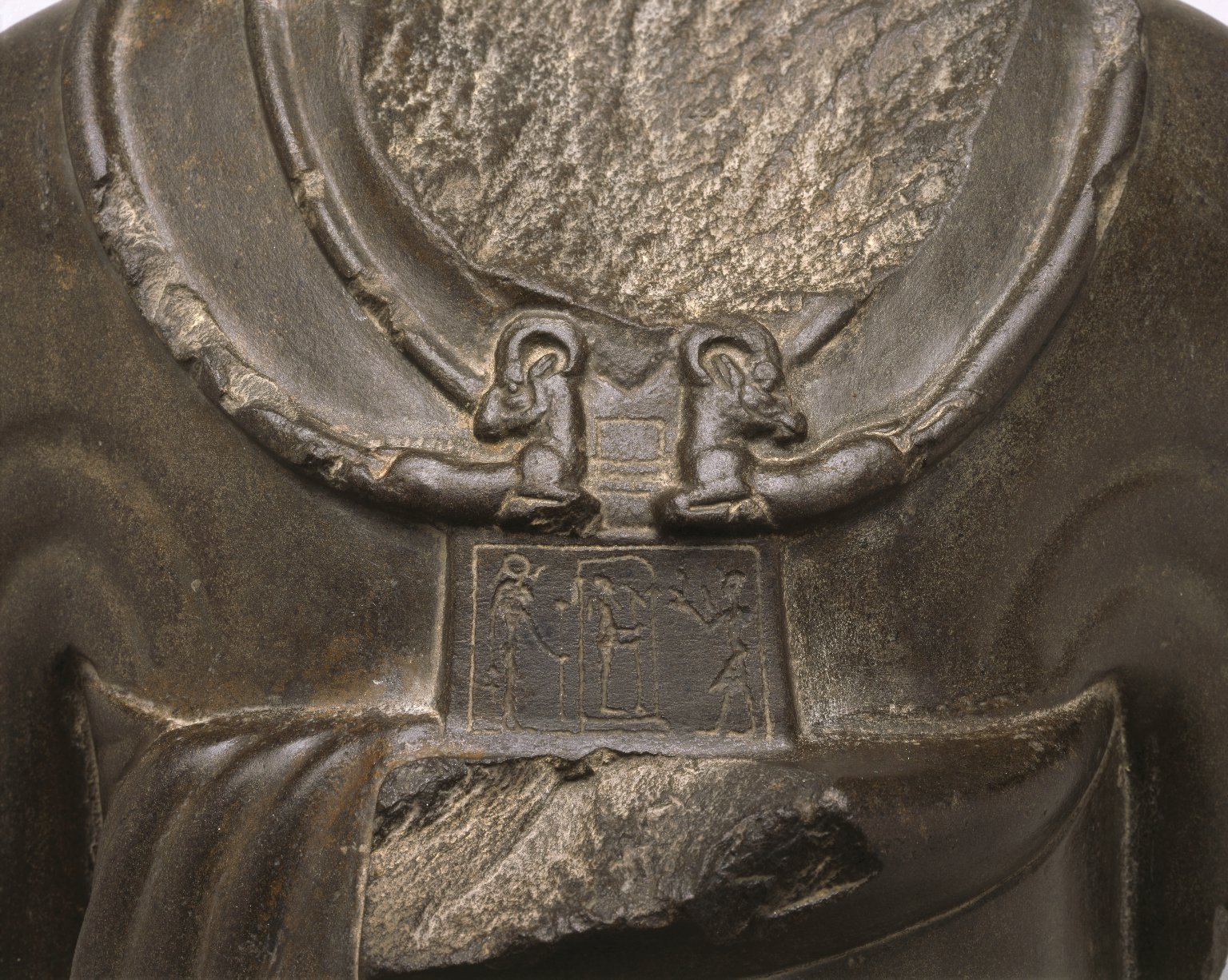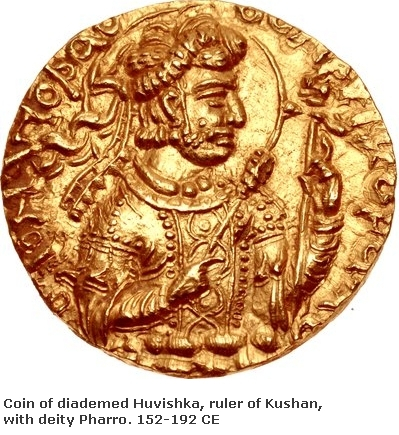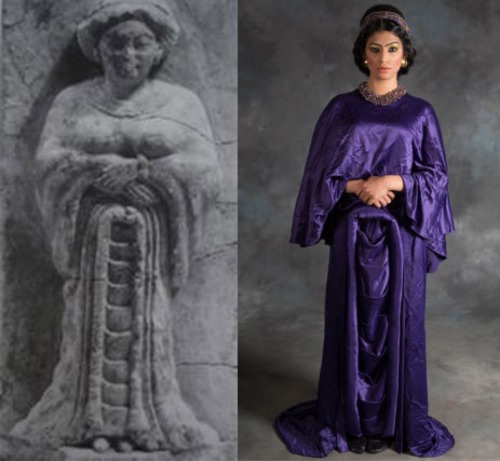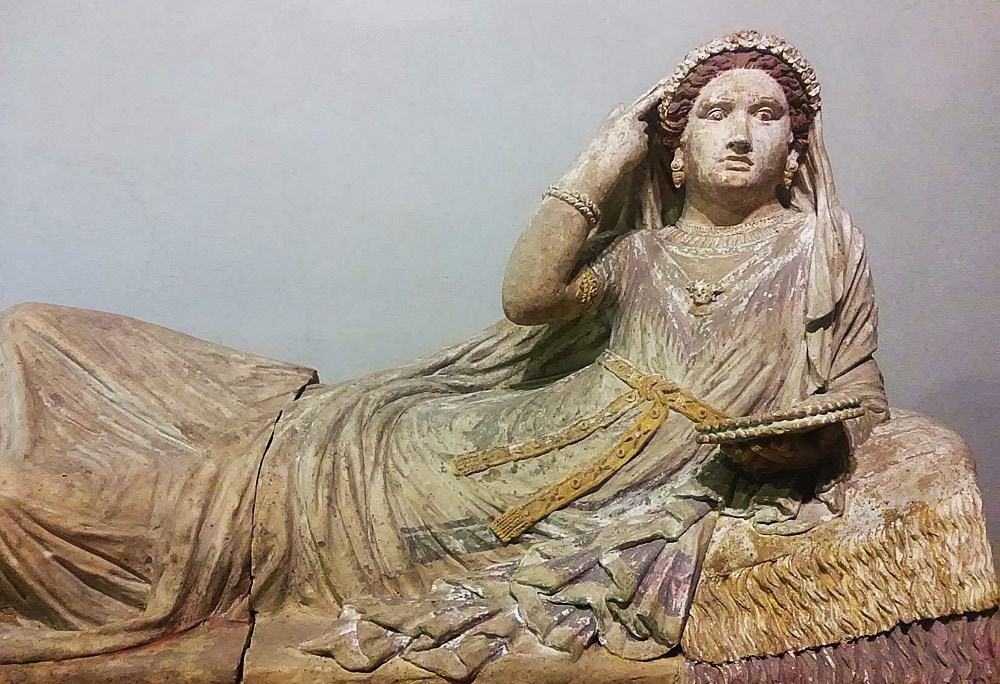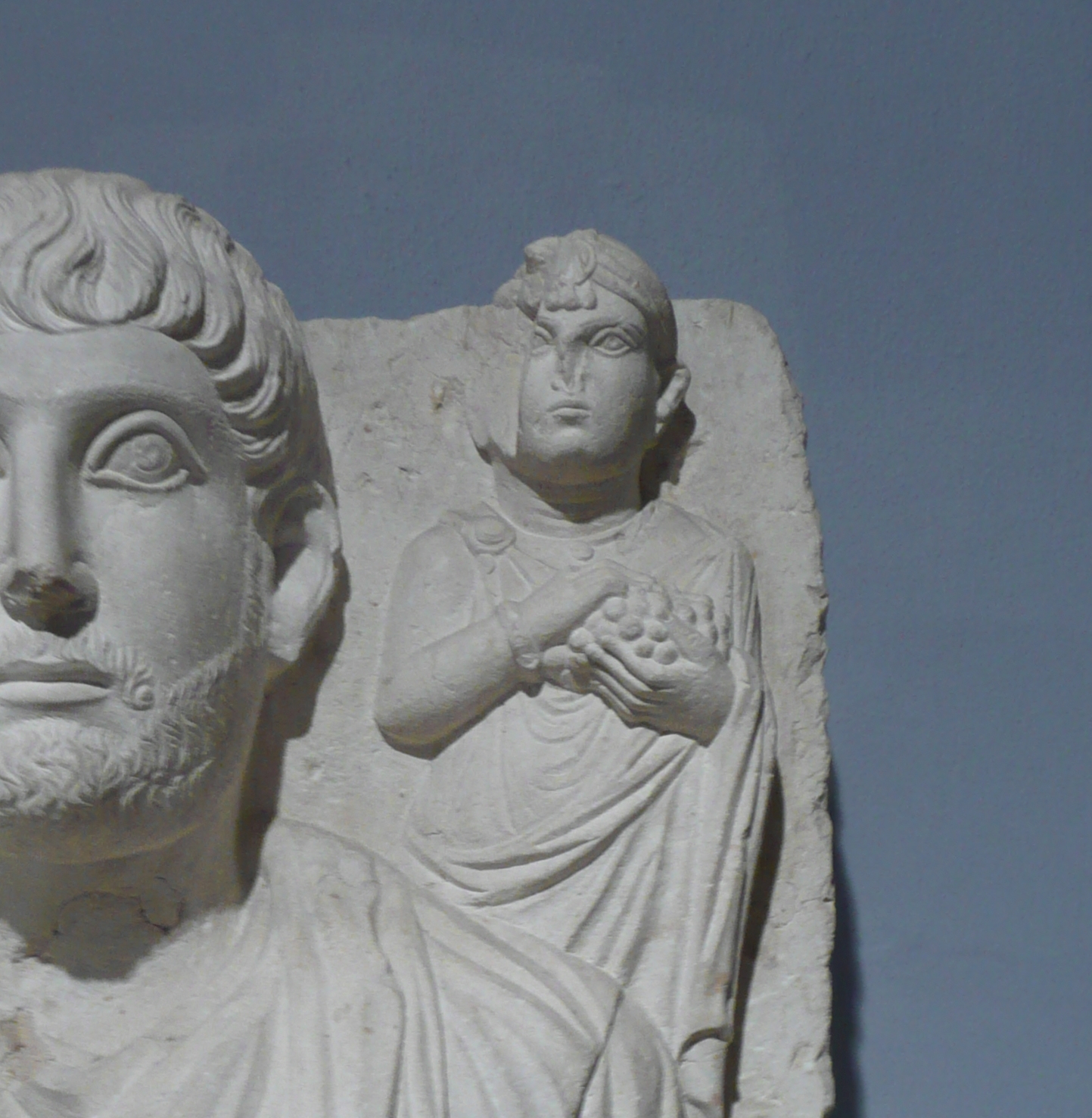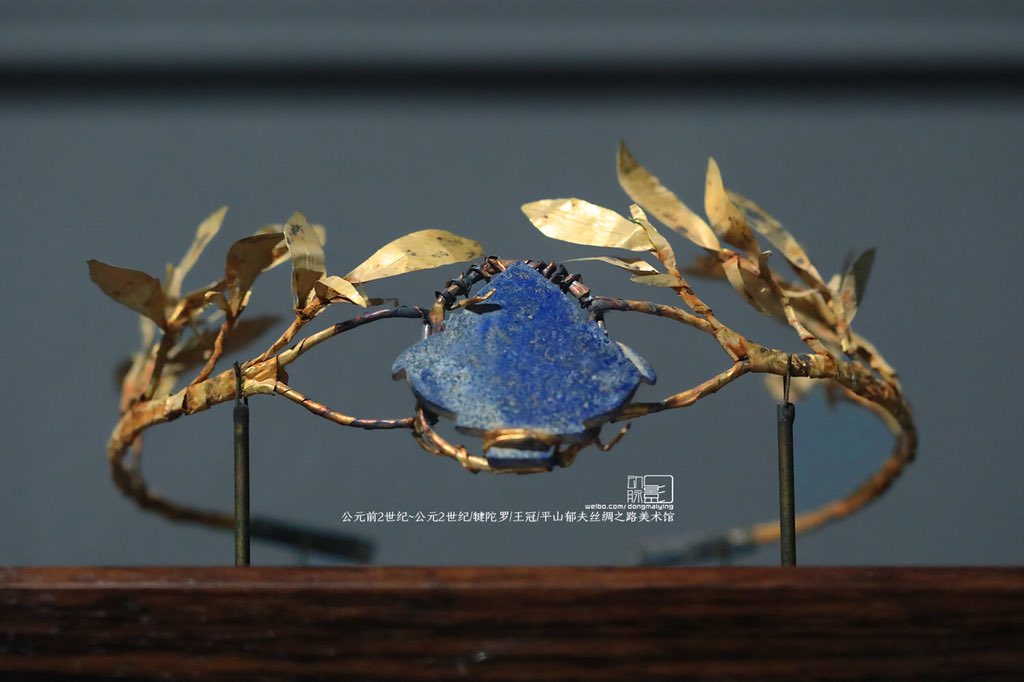Nobleman of the Kushan Dynasty, schist, 2nd~3rd century, 122*480mm. Statue from private collection in Seul, Korea, recently re-discovered as a king Kanishka [source]
 http://www.djuna.kr/xe/board/13315703
http://www.djuna.kr/xe/board/13315703
The discovery of the stone statue of King Kanishka, the protagonist of the prosperous ‘Gandhara Buddhism’ [an article auto-translation via Google translator]
‘간다라 불교’ 융성의 주역 카니시카 왕의 석상의 발견
Reporter Kwon Jae-hyun confetti@donga.com [권재현 기자 confetti@donga.com]
“If this child stays in the world, he will become a great all-wheeled king in the future, and if he goes home, he will become a Buddha (enlightened person) who saves living beings.” It is introduced as a prophecy left by Ashita, a saint in the Himalayas, in the story of the birth of Buddha Sakyamuni. The wheel lord appearing here is a Chinese translation of the Sanskrit chakravartin or chakravartirazha. An ideal king in Indian Hindu mythology, it refers to a being who unifies all nations on earth and rules peacefully by rotating the chakras (chakras) of government in the sky.
There have been several kings in Indian history who claimed to be chakravartins, but only two were called voluntarily by Buddhists. The first is Ashoka the Great of the 3rd century BC. As the 3rd king of the Maurya dynasty, which established the first unified dynasty in the Indian subcontinent, he established Buddhism as the state religion and laid the foundation for the prosperity of Buddhism. After completing the conquests that began in the time of his grandfather Chandragupta, Ashoka turned to Buddhism, becoming disillusioned with war and slaughter, and made the ideals of mercy, non-killing and non-violence the foundation of his rule. Appearing as King Ayuk (阿育王) or Asuga (阿輸迦) in the Buddhist scriptures translated into Chinese characters, he sponsors the 3rd assembly of the 4 Buddhist scriptures to unify the sutras that recorded the words after the death of Sakyamuni. In addition, he is described as a holy king who spread Buddhism to the Indian Empire and neighboring countries by erecting stupas in 84,000 empires with the relics of Buddha Sakyamuni.
The second Ashoka, Kanishka
However, the Maurya dynasty was destroyed 47 years after his death, and the Indian subcontinent was divided and occupied by foreigners. In particular, the fusion of East and West takes place in Gandhara, the fertile region of northwest India, present-day northeast Afghanistan and northern Pakistan, where Greek dynasties and Central Asian dynasties alternate. It is the birthplace of Gandhara Buddhist art. The Buddha image first appeared in Gandhara and Mathura in northern India around the 1st century BC, and it coincided with the birth and spread of Mahayana Buddhism. The Kushan dynasty was founded by the Wolji tribe, a nomadic people in northwestern China, who built the largest empire among the dynasties that ruled the Gandhara region. King Kanishka, who led the heyday of the Kushan dynasty in the 1st and 2nd centuries, was engrossed in Buddhism like King Ashoka, built pagodas and temples throughout his empire, and spread Buddhist images. Kanishka, written in Chinese characters, Kanishka (迦膩色迦), completed the compilation of Buddhist scriptures by sponsoring the 4th assembly, which took place 300 years after King Asoka’s 3rd assembly.
Ashbagosa, an early theorist of Mahayana Buddhism and famous for his Chinese name, Ma Myung, is a legendary high priest who said that King Kanishka brought him instead of reparations when he subjugated the Buddhist kingdom of Magada in northeastern India. He is presumed to be the author of ‘Buddhacharita’, an epic poem about the deeds of Buddha Sakyamuni, and ‘Theory of Mahayana Buddhism,’ a famous introductory book to Mahayana Buddhism. The fame of this magic came from the classification and compilation of various Buddhist sects and Buddhist sutras while leading the 4th gathering under the auspices of King Kanishka. It was also during the reign of King Kanishka that Indian Buddhism spread to China and Parthia, the civilized region of Greece. Therefore, in Buddhism, he was called the ‘second Ashoka’ and established himself as the second king of the wheel castle.
“I see the bravery of the King of Wheels”

The face of the presumed stone statue of King Kanishka. [Kim Do-gyun]
Many Gandhara Buddha statues that were made during the reign of King Kanishka remain. However, statues of King Kanishka are rare. There are figurines of King Kanishka in three places around the world: the Kabul Museum in Pakistan, the Guimet Museum in France, and the Mathura Museum in India. This is because the later conquerors destroyed the statues of the previous conquerors while conquering the Gandhara region. However, a rare full-length statue of King Kanishka’s face was discovered. This is a stone statue of Gandara period currently on display at Inter Art Channel, a complex cultural space in Itaewon-dong, Yongsan-gu, Seoul. This stone statue, about 120 cm high, is the work of a private collector from Pakistan, which was exhibited at the Gandhara art exhibition ‘Alexander the Great met the Buddha’ last year, organized by the Seoul Arts Center. At the time, it was introduced only as a ‘nobleman of the Kushan Dynasty’ and did not receive much attention. However, Kang Woo-bang, an elder art historian, and director of the Institute of Korean Art History, Il-hyang, saw that the statue was an extraordinary figure comparable to that of a Buddha. This is because the entire statue was full of spirit signs (patterns expressing the principle of rebirth of all things in the form of plants and animals) that can only be seen on Buddha statues. First of all, the person’s hair is in the shape of a bald head like that of a Buddha. Nabal refers to hair curled into a circle like a conch shell found on the Buddha statue of Sakyamuni. Western art historians saw the nabal found on the hair of a Gandhara Buddha and thought it was an imitation of the curly hair of a Greek sculpture. However, this is a representation of the characteristics of the 32 statues and 80 bells representing the physical characteristics of the Buddha, and is commonly found in the Buddha statues of Mathura.
Also, the features held by the main character of the sculpture were unusual. A character is a specific object that symbolizes the power of the protagonist in a myth. For Hermes, staff and winged shoes appear, for Bodhisattva Kannon, Jeongbyeong and lotus flowers appear, and so on. The figure in the Gandhara sculpture in question is holding a flower that looks like a lotus in his right hand, and his left hand is likely to be holding a sword, judging from the shape of the scabbard that has been blown away. The sword is a symbol of the emperor, and the lotus is a symbol of mercy.
Third, various aikido patterns were abundantly expressed on the conical hat, necklace, sheath decoration, and shoes the person is wearing. In particular, the round orb (寶珠) was being changed in various forms as the source of the spiritual rebirth of all things. The orb, called ‘Chintamani’ in Sanskrit, is originally a gift of the Buddha Sakyamuni, and is expressed as a source of vitality that creates all things. Director Kang concluded that the pearl-like orb pattern that appears countless times on the statue symbolizes a person with power comparable to that of Sakyamuni. Who is such a person? A being who is comparable to the Buddha while staying in the worldly world, he is the King of Wheels. In history, only King Ashoka and King Kanishka have left behind achievements that can be called the wheel castle kings. However, the stone statue in question is a Gandhara stone statue. Therefore, there is a high possibility that it is King Kanishka.
A new interpretation of Gandhara art

The symbol on the left of the pedestal of the stone statue of King Kanishka [Kim Do-gyun]
So, while tracing the art materials related to King Kanishka, Director Kang discovered that the shape of the statue was similar to that of the statue of King Kanishka in the Kabul Museum, where only the lower body remained. The round orb pattern was similar to the part where the ankle bones of both feet were.
However, an unusual symbol of unknown meaning was found on the left side of the stone stand where the statue was dedicated. To be called an inscription, there were only two symbols, and it was not in Sanskrit. Dr. Park Gyo-soon, who received a master’s and doctoral degree in Pakistan and is working as a local Gandhara art researcher, provided decisive evidence. Kimal Akishev (1924-2003), a Gandhara art researcher from the former Soviet Union, found the symbol in a table that classified the symbols of the seven kings of the Kushan dynasty based on excavations in Afghanistan and Central Asia. In the case of King Kanishka, 5 symbols were used, and it was confirmed that they were consistent with 2 of them.
The symbol of the seven kings of the Kushan dynasty. The third is the symbol of King Kanishka. [Photo courtesy of Kang Woobang]
“The excavation of Gandhara art was led by British scholars who had colonized Pakistan and Afghanistan, and the perspective that deviated from ‘Buddhist art established under the influence of ancient Greek sculpture’ is implicitly ignored. Nor do they try to look into the achievements of Russian academics because they have not been translated into English. Director Woobang Kang is showing achievements that go beyond the limits of theories established by Western art historians with his own methodology called Spiritual Rebirth Theory. In Japan alone, there are more than 20 art museums dealing with Gandhara art, but they are still focused on Western theories.” Dr. Park said, “Although it has not been reported to the academic world, there are several more stone statues of King Kanishka among the stone statues in his personal collection.”
Stone statues of King Kanishka in the collections of the Kabul Museum in Pakistan (left) and the Mathura Museum in India. None of them have faces left, but in particular, the shoes and bottoms of the Kabul Museum stone statues are similar to the stone statues exhibited on the Inter Art Channel. [Photo provided by rain shower]
However, there are still more hurdles to overcome to conclude that it is a stone statue of King Kanishka. King Kanishka printed many gold coins, with the Buddha’s body on one side and his own body on the other side. However, the king Kanishka on the coin boasts a rich beard, while the king Kanishka on the stone has only a delicate mustache. In addition, King Kanishka is from the Wolji tribe who applied on the border between China and Central Asia, and the figures on the statues and coins have a Western appearance. Director Kang Woo-bang explained, “Ancient kings were objects of worship just like gods and Buddhas. did. Likewise, the Gandhara Buddha image is also leading to a misunderstanding that the fact that the features are clearly shaped in an ideal form according to the principle of rebirth in spirit is due to the influence of realistic Western art.
“The belated appearance of the Buddha statues by Indians should not be regarded as a failure, but rather as a failure. Since the Buddha is such a sacred being, he refrained from direct expression and replaced it with only symbols such as bodhi trees, pillars, footprints, lotus flowers, orb, and saritam. Then, with the advent of Mahayana Buddhism, in order to make it easier for the public to approach Buddhism, it revived the principle of spiritual rebirth, which was commonly applied to mankind when creating images from the primitive era. It is not a concrete and realistic depiction, but an ideal and symbolic depiction. It is misunderstood that what is expressed in the form of hair or hair wrapped around to express divine energy is called Western-style curly hair, and what expresses the skeleton or clothes of the body like a ripple caused by a strong stream of water is a powerful and realistic depiction. As artists from Greece participate in the production of the Buddha Gandhara, a Greek style may be added, but the principle of production is the same as that of the Buddha Mathura, and the principle of rebirth is applied.”
[Kim Do-gyun]
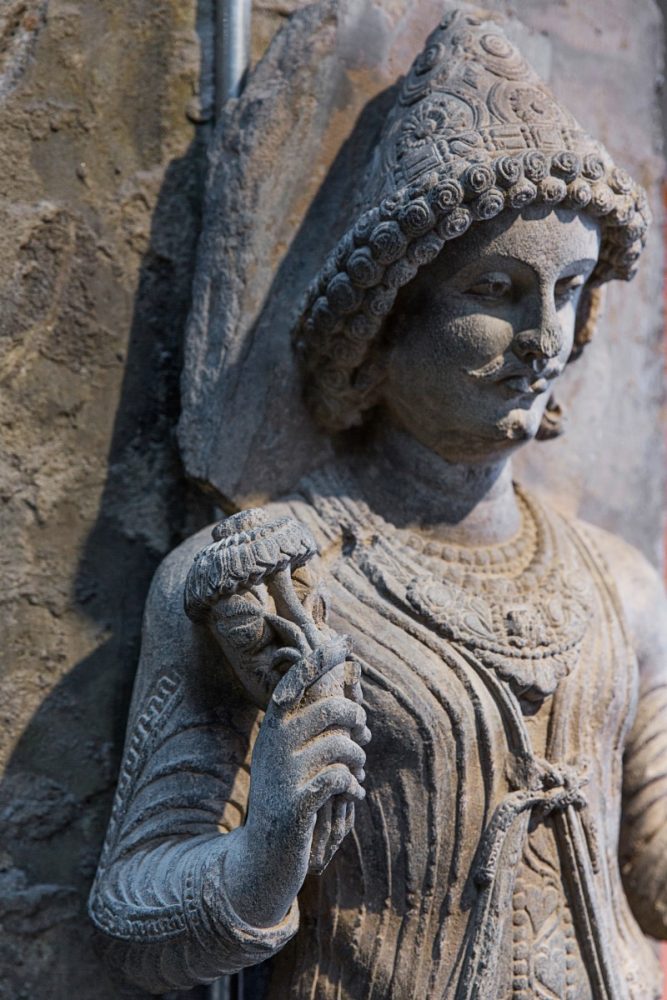
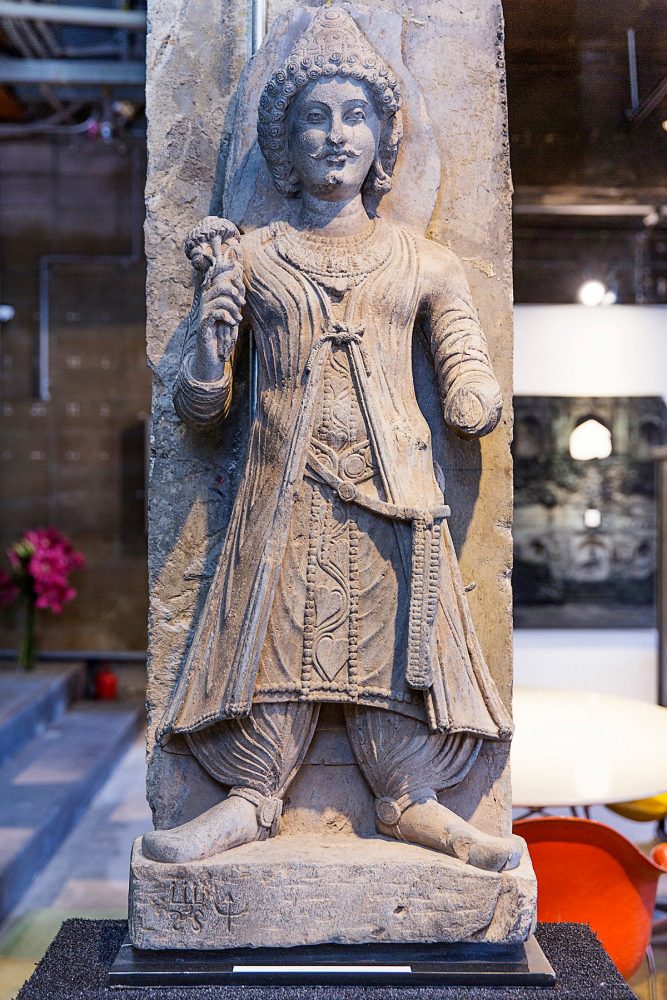
https://weekly.donga.com/3/search/11/1577101/1
https://m.blog.naver.com/PostView.naver?isHttpsRedirect=true&blogId=confetti0307&logNo=221436888947
A.Akishev, Art and mythology of Sakas
“Science”, Alma-Ata, 1984
Kushan royal tamgas, Table 10 page 108


